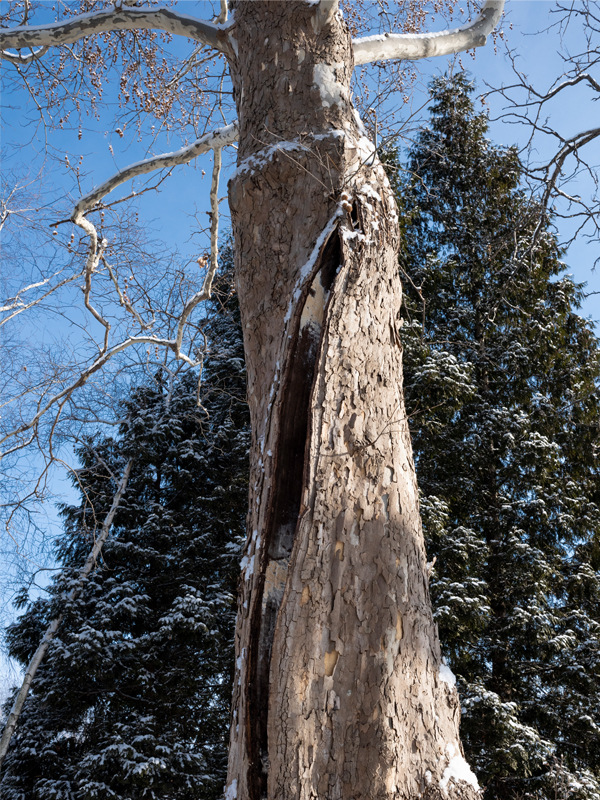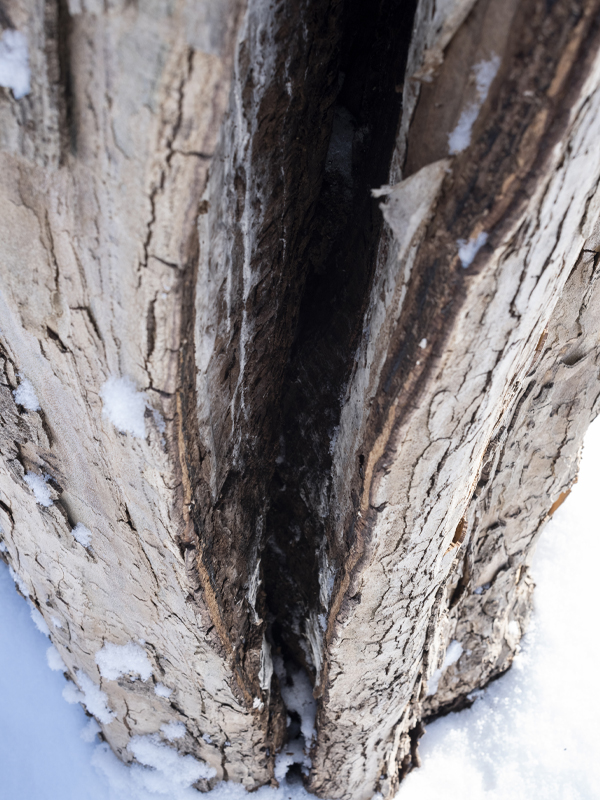Susceptible Plants
Deciduous trees, especially young trees with thin bark planted in sunny, exposed sites.
Description & Symptoms
Vertical cracks appear in the winter in the bark of the sunny side of trees, particularly on the side of the trunk oriented to the south or southwest. Frost cracks are injuries caused by the expansion and contraction of bark and underlying tissues in response to warm daytime temperatures and cold nighttime temperatures.
Timing & Life Cycle
Frost cracks are a winter problem that is especially severe if warm afternoon sun is followed by a rapid drop in temperature at sundown. Reflected light from snow cover can exacerbate the problem.
Treatment & Solutions
Select trees that are winter hardy in your region. Siting trees properly is also important. For example, woodland trees that prefer shade may be more prone to frost cracking if planted in a sunny location. Providing water during dry periods, particularly in the fall, will help trees resist cracking during winter; stressed trees are more susceptible to frost cracks. Repair is generally not recommended as healthy trees will seal off a wounded area by forming callus tissue around it. Young trees with thin bark should be routinely inspected. Frost cracks are rarely life threatening; however, the wounds can present an entry for insects and disease. Recent studies indicate that wrapping tree trunks is not an effective technique for avoiding frost cracks.
For more information about frost cracking, please contact Plant Information Services at (847) 835-0972 or email.



